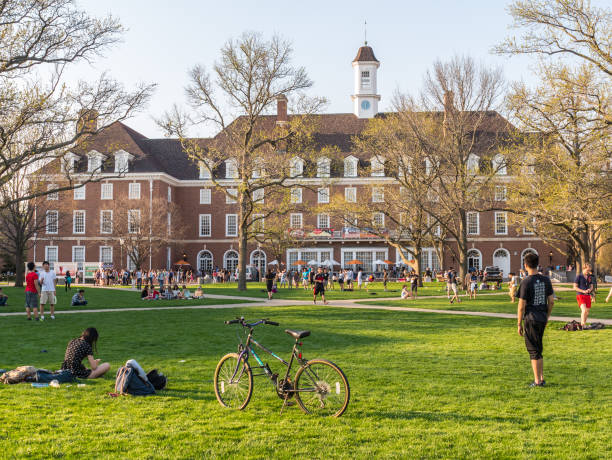Introduction
U.S. universities are renowned worldwide for their academic excellence, research prowess, diverse student communities, and extensive resources. This article explores the factors that contribute to the global prominence of U.S. universities, highlighting their unique strengths and contributions to higher education.
Academic Excellence and Prestige
World-Class Institutions
Top Rankings:
- Ivy League: Universities like Harvard, Yale, and Princeton are globally recognized for their rigorous academic programs, esteemed faculty, and historical significance.
- Research Universities: Institutions such as Stanford, MIT, and UC Berkeley lead in scientific research, innovation, and scholarly publications.
Strong Emphasis on Research
Research Funding:
- Federal Grants: U.S. universities receive substantial funding from federal agencies like NIH, NSF, and DOE, supporting groundbreaking research in medicine, technology, and engineering.
- Corporate Partnerships: Collaborations with industry leaders facilitate innovation, entrepreneurship, and technology transfer, driving economic growth and societal impact.
Diversity and Inclusivity
Global Student Body
International Students:
- Diverse Perspectives: U.S. universities attract students from around the world, fostering cultural exchange, global awareness, and cross-cultural understanding.
- Support Services: International student offices provide resources, orientation programs, and visa support to help students integrate into campus life and succeed academically.
Campus Culture
Inclusive Communities:
- Diversity Initiatives: Universities promote diversity through multicultural events, student organizations, and inclusive policies that celebrate cultural heritage and foster belonging.
- Equity and Access: Efforts to enhance accessibility, affordability, and support services create a welcoming environment for students from diverse backgrounds.
Flexibility and Interdisciplinary Approach
Liberal Arts Education
Broad Curriculum:
- Core Curriculum: Liberal arts colleges offer a well-rounded education with courses in humanities, social sciences, natural sciences, and interdisciplinary studies.
- Critical Thinking: Emphasis on analytical skills, problem-solving, and communication prepares students for diverse career paths and lifelong learning.
Interdisciplinary Research
Collaborative Programs:
- Cross-Disciplinary Research Centers: Institutes and centers encourage collaboration across fields like bioinformatics, environmental studies, and public policy, addressing complex global challenges.
- Innovation Hubs: Incubators and innovation centers facilitate entrepreneurship, startup ventures, and technology commercialization, bridging academia and industry.
Supportive Academic Environment
Faculty Expertise
Renowned Scholars:
- Leaders in Their Fields: U.S. universities attract top scholars, Nobel laureates, and industry experts who mentor students, conduct groundbreaking research, and influence global discourse.
- Teaching Excellence: Faculty engage students through interactive lectures, seminars, and research opportunities that inspire intellectual curiosity and academic achievement.
Student-Centric Approach
Student Support Services:
- Advising and Counseling: Academic advisors, career counselors, and mental health professionals provide personalized support, guidance, and resources to promote student success.
- Experiential Learning: Internships, study abroad programs, service-learning projects, and undergraduate research opportunities enhance hands-on learning and career readiness.
FAQ about U.S. Universities’ Global Standing
Q1: What are the benefits of studying at a top-ranked U.S. university?
A1: Benefits include access to world-class faculty, cutting-edge research facilities, diverse academic programs, extensive career opportunities, and a vibrant campus life that fosters personal and professional growth.
Q2: How can international students apply to U.S. universities and what are the requirements?
A2: International students should research universities, prepare for standardized tests (TOEFL, SAT/ACT, GRE/GMAT), gather academic transcripts, write essays/personal statements, and apply online following each university’s specific admissions deadlines and requirements.
Q3: Are scholarships available for international students at U.S. universities?
A3: Yes, many U.S. universities offer scholarships, grants, and financial aid packages for international students based on academic merit, talent, financial need, and diversity. Check each university’s financial aid website for eligibility criteria and application deadlines.
Q4: How can U.S. universities contribute to global research and innovation?
A4: U.S. universities lead global research in fields such as science, technology, medicine, engineering, and social sciences through partnerships, collaborative research centers, and technology transfer initiatives that translate academic discoveries into real-world applications.
Q5: What support services are available for international students at U.S. universities?
A5: International student offices provide support services including visa assistance, orientation programs, academic advising, cultural integration workshops, language support, and resources for mental health and well-being.
Q6: How do U.S. universities promote diversity and inclusion on campus?
A6: Universities promote diversity through multicultural events, student organizations, inclusive policies, diversity training programs, equity initiatives, and support services that create a welcoming environment for students of all backgrounds.
Conclusion
U.S. universities stand out globally for their commitment to academic excellence, research innovation, diversity, and student support. By fostering a dynamic learning environment, embracing interdisciplinary collaboration, and preparing students to tackle global challenges, these institutions play a pivotal role in shaping future leaders and advancing knowledge worldwide.
Also Read: Exploring Campus Culture: Diversity at U.S. Universities
